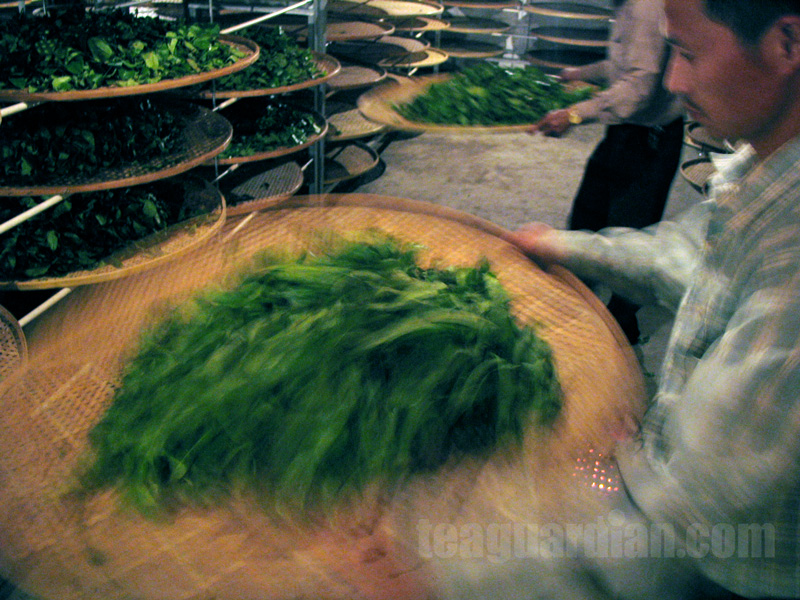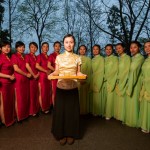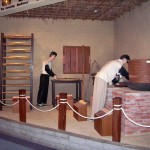Oolongs: Production

Tea processing artisans rock the leaves in the yao qing process to scratch the edges of the leaves for triggering oxidation to form the proportion of taste and salutory substances unique in oolong. Wuyishan, Fujian
The principal of oolong production involves scratching the leaves for gradual and slight breakage of the cell structure around the edge of the leaf so that its enzymes come into contact with other leaf constituents to turn them into the unique taste and aromatic substances. This is enzyme-triggered oxidation and has been widely labelled as “fermentation”. We shall follow this convention of term use in this site to avoid confusion. An oolong, then, is defined as a partially-fermented tea.

Edge of the leaf bruised and oxidized towards the end of the fermentation process. This Wuyi demonstartion is visually more dramatic in than most other styles of oolong.
an intricate process
The major steps in oolong production are in principle the same in different regional and style practices (romanization the proper Chinese terms in brackets, since this is a unique Chinese process):
- Selective plucking (cai qing 採青)
- Sun-withering (shai qing 曬青)
- Shading (liang qing 晾青)
- Fermentation (zao qing, 造青 or the simplified version: yao qing 搖青)
- Roasting (sha qing 殺青)
- Curling, twisting and/or rolling (cuo rou 搓揉 and/or bao roy 包揉)
- Baking (hong qing 烘青 or bei huo 焙火)
- Drying (bei gan 焙乾)

Layout of an oolong village: the village, together with all the processing facilities, is at the centre of the tea gardens so the freshly plucked leaves can be processed immediately.
One common key to quality in these steps is the immediacy of the subsequent step. This is particularly important between plucking and sun withering. Leaves kept in baskets or bushels do not yield the kind of clarity of taste that fine oolongs have. They have to be laid out evenly and thinly under the sun for 1 to 2 hours immediately after plucking.
There are differences in the execution of each steps amongst the regions and hence dramatically unique characters of each. This is further amplified by the use of a huge range of cultivars in each region. Since the four major production regions are geographically and culturally very close to each other, interactions between them constantly give rise to modification of processes, horticulture and management. Taiwan has brought in much positive influence in the past few decades and as communication intensifies, I believe there will be even further advancement in this category.
Want to know more about oolong production? Read <Traditional Oolong Production: A Live Showcase>











1 Response
[…] to Tea Guardian, the production of this tea has 8 distinct stages, which have to occur in immediate succession, […]